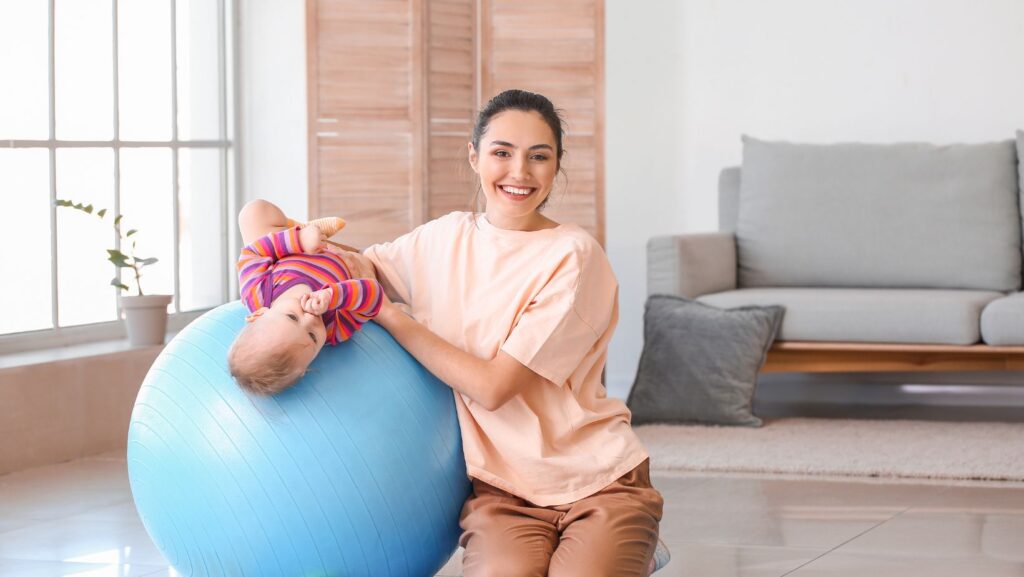Vestibular exercises enhance children’s spatial awareness and overall sensory processing. These activities stimulate the vestibular system responsible for balance, coordination, and spatial orientation. The top vestibular exercises for improving spatial awareness in children include swinging, spinning, rolling, and activities that involve changes in head position.
Children who engage in regular vestibular activities often show improved balance, better coordination, and enhanced spatial awareness. These exercises can be easily incorporated into daily routines or playtime, making them fun and beneficial. From simple tasks like somersaults to more complex activities like navigating obstacle courses, numerous ways exist to challenge and develop a child’s vestibular system.
Parents and caregivers can find a wealth of information on vestibular exercises in Soundsory’s guide to the top vestibular exercises. Such resources provide detailed instructions and safety tips for implementing these activities effectively. By consistently practicing these exercises, children can develop stronger spatial awareness skills essential for everyday tasks and future learning experiences.
Key Takeaways
- Vestibular exercises stimulate the balance system and improve spatial awareness in children.
- Activities like swinging, spinning, and rolling are effective for vestibular development.
- Regular practice of vestibular exercises can enhance coordination and sensory processing skills.
Understanding the Vestibular System in Children
The vestibular system is crucial in children’s development, affecting balance, movement, and spatial awareness. This sensory system in the inner ear processes information about head position and motion.
Role of the Vestibular System in Development
The vestibular system is essential for motor skills, posture, and balance. It helps children coordinate movements and maintain equilibrium while walking, running, or climbing.
Vestibular input influences visual perception and eye movements, enabling children to focus on objects while moving. This impacts reading and writing abilities.
The system contributes to spatial awareness, allowing children to understand their body’s position to their environment. This affects navigation and object manipulation.
Vestibular processing also influences emotional regulation and attention. Children with well-functioning vestibular systems often exhibit better focus and emotional stability.
Common Vestibular Disorders and Their Impact
Vestibular disorders can affect children’s balance, coordination, and sensory processing. Some common issues include benign paroxysmal vertigo of childhood and vestibular neuritis.
These disorders may cause dizziness, vertigo, or balance problems. Children might experience difficulty with physical activities, sports, or playground equipment.

Vestibular dysfunction can lead to delayed motor development, affecting skills like crawling, walking, or riding a bicycle. It may also impact learning and academic performance.
Some children with vestibular disorders may exhibit sensory processing issues, such as motion sickness or fear of heights. Early identification and intervention are key to managing these conditions effectively.
Effective Vestibular Exercises for Children
Vestibular exercises play a crucial role in enhancing children’s spatial awareness and motor skills. These activities stimulate the inner ear and help improve balance, coordination, and sensory processing.
Exercises for Improving Balance and Coordination
Head tilts are simple yet effective exercises for vestibular stimulation. Children can slowly tilt their heads from side to side, guided by tactile cues like a parent’s hand or a soft toy on their shoulder. This gentle movement helps develop balance and spatial orientation.
The inchworm exercise combines vestibular input with proprioception. Starting from standing, children slowly fold in half and place their hands on the ground. They then walk their hands forward and bring their feet up to meet their hands.
Swinging activities provide powerful vestibular input. Options include playground swings, porch swings, or blanket swings held by two adults. These movements challenge the vestibular system and promote spatial awareness.
Movement-Based Activities for Spatial Orientation
Spinning exercises offer intense vestibular stimulation but should be used cautiously. Children can spin in large circles on a tire swing or office chair, stopping to observe how their body feels afterward.

Jumping activities, such as using a trampoline or jumping rope, combine vestibular input with proprioceptive feedback. These exercises enhance body awareness and motor planning skills.
Rolling exercises, like somersaults or log rolls, provide multidirectional vestibular input. Children can roll on grass, mats, or down a small incline to vary the stimulation intensity.
Integrating Vestibular Activities in Daily Routines
Incorporating balance challenges into everyday tasks can boost vestibular processing. Children can try brushing their teeth while standing on one foot or getting dressed while sitting on a therapy ball.
Playground equipment offers numerous opportunities for vestibular input. Climbing structures, slides, and merry-go-rounds all provide varied movement experiences that challenge the vestibular system.
Creating obstacle courses at home or in the backyard can combine multiple vestibular activities. Children can crawl under tables, walk along a balance beam, and jump over small hurdles, integrating different types of movement and spatial awareness challenges.
Conclusion
Vestibular exercises are crucial in enhancing children’s spatial awareness and overall development. These activities stimulate the inner ear’s balance system, improving coordination, balance, and sensory processing. Regular practice of exercises like log rolling, walking on a line, and head tilts can lead to noticeable improvements in a child’s motor skills and spatial orientation.
Incorporating vestibular activities into daily routines can benefit children’s learning and attention. Parents and educators are encouraged to implement these exercises consistently to support children’s sensory development and physical well-being.
